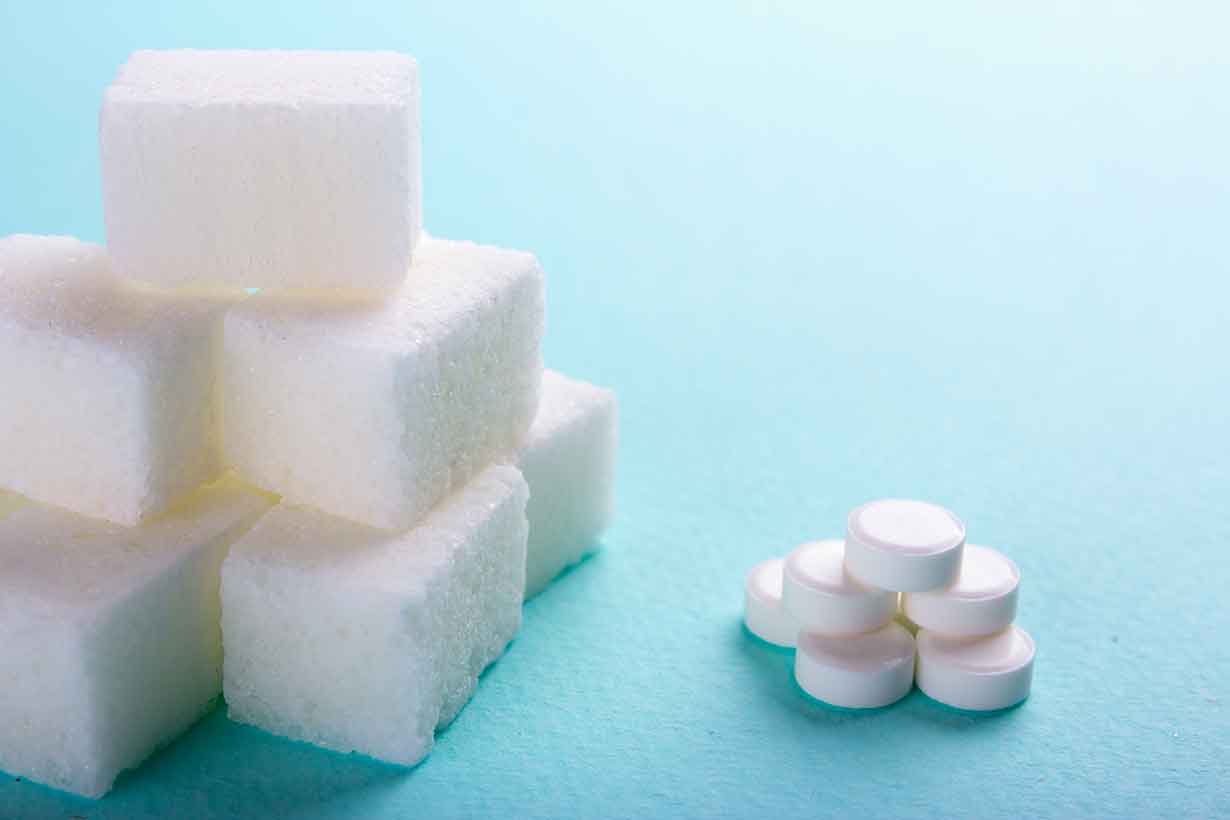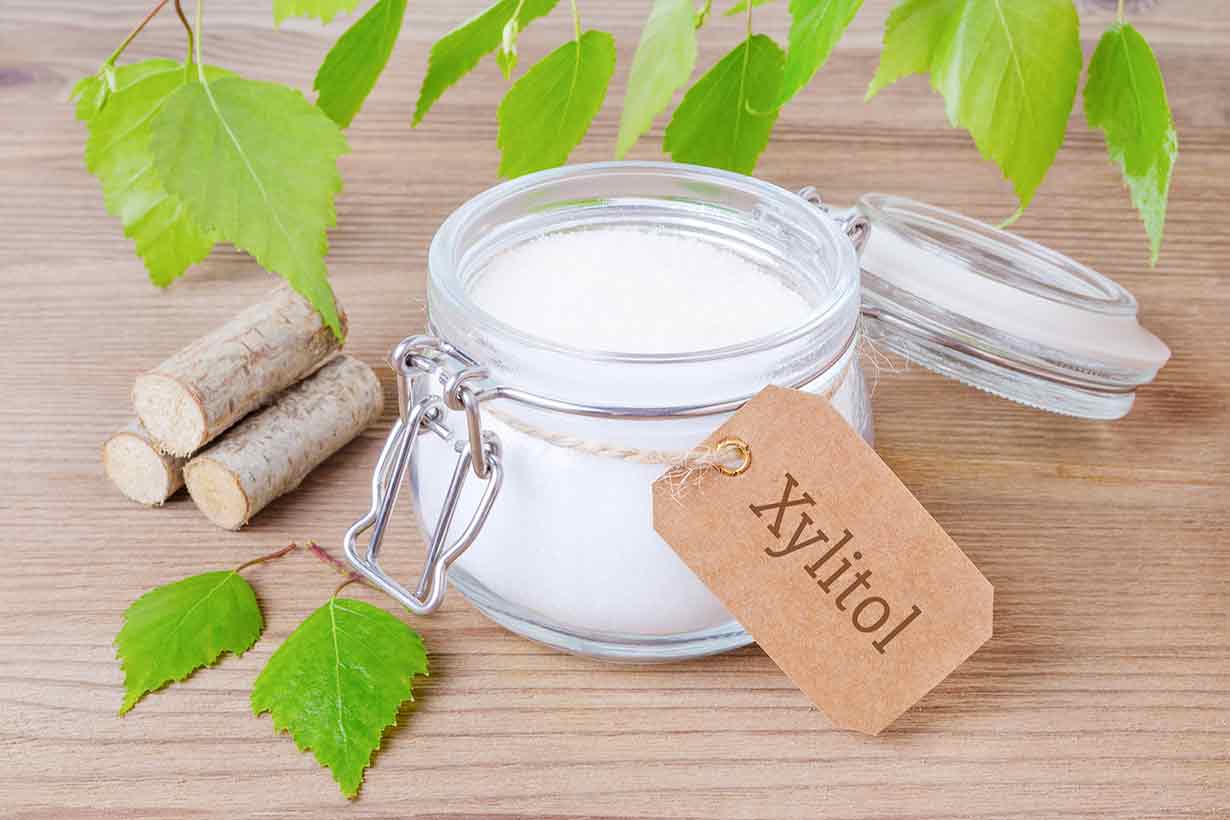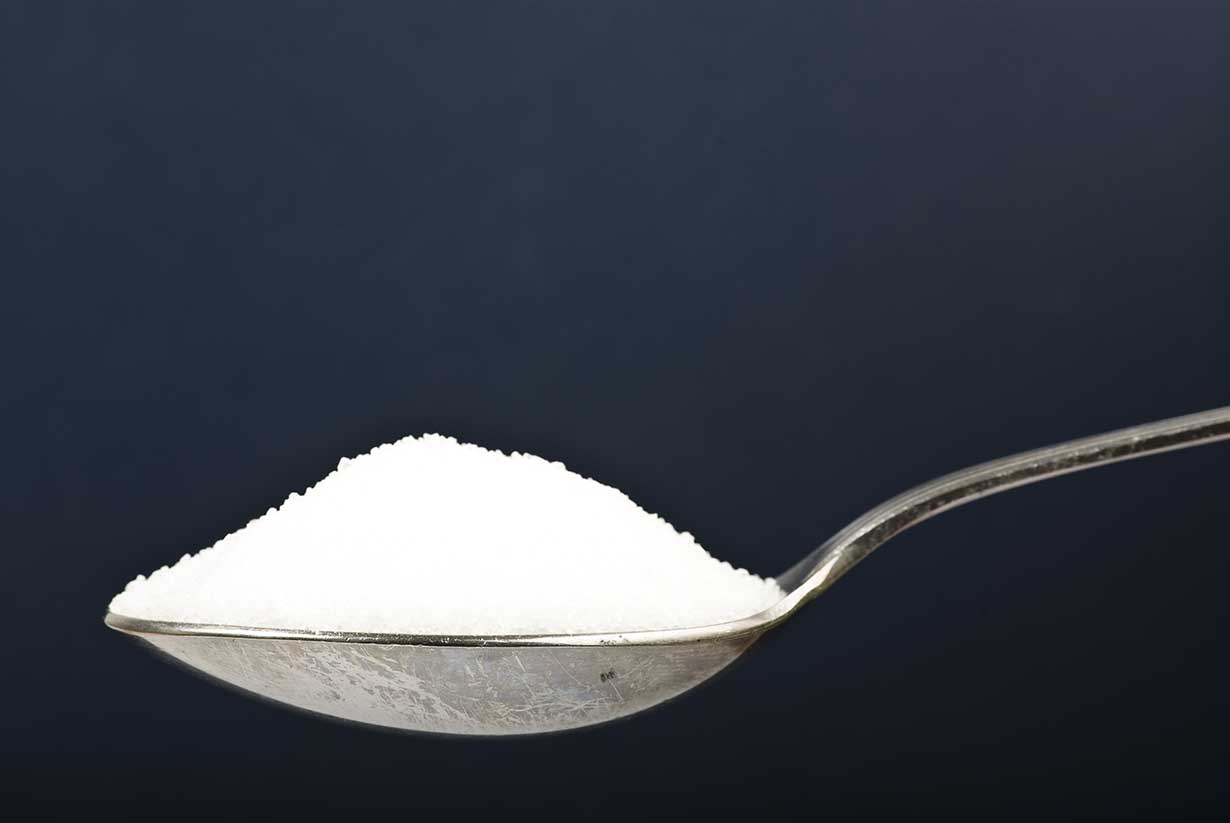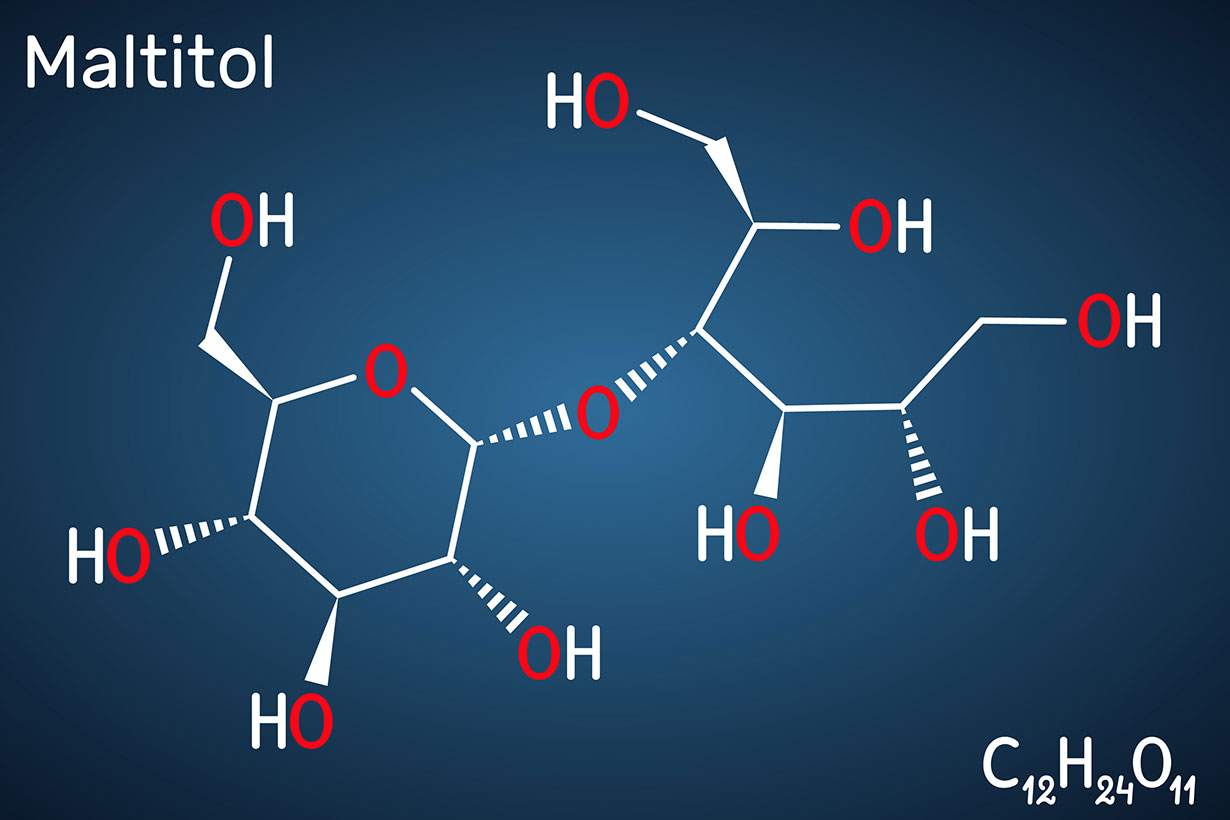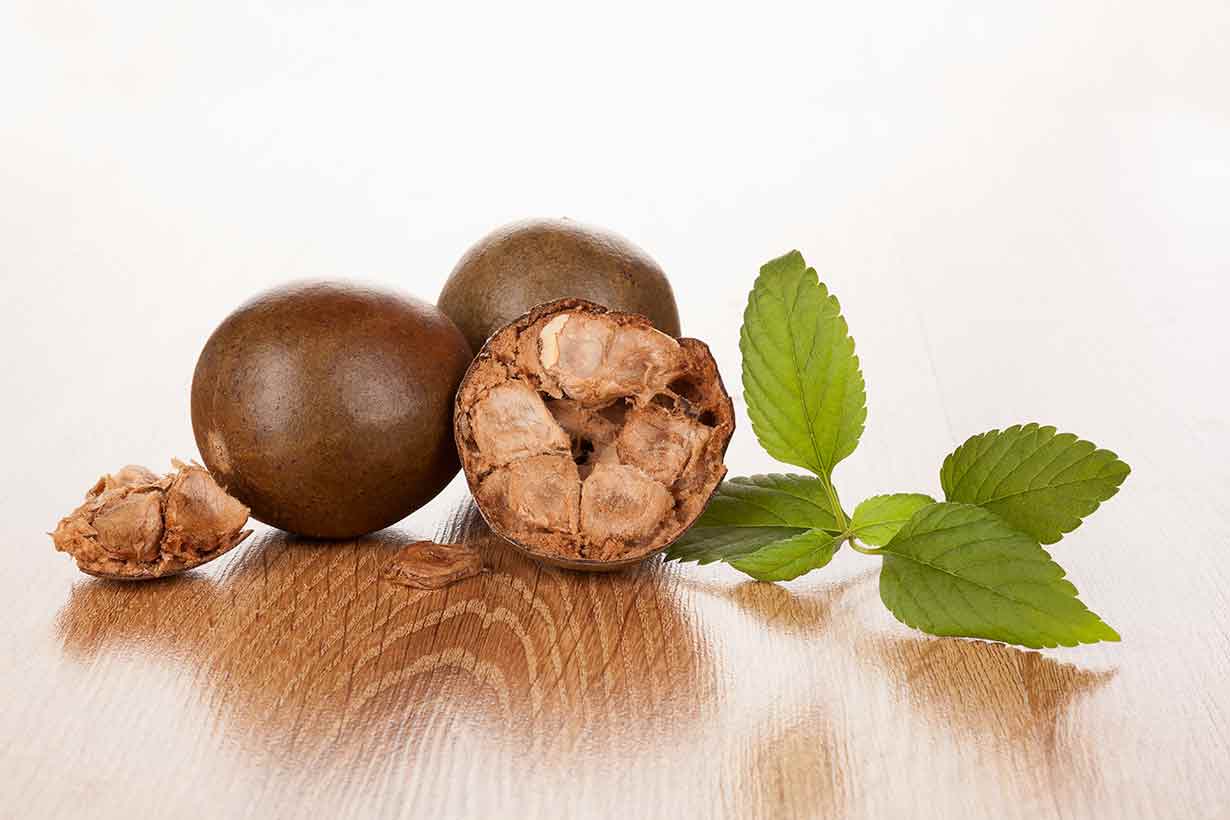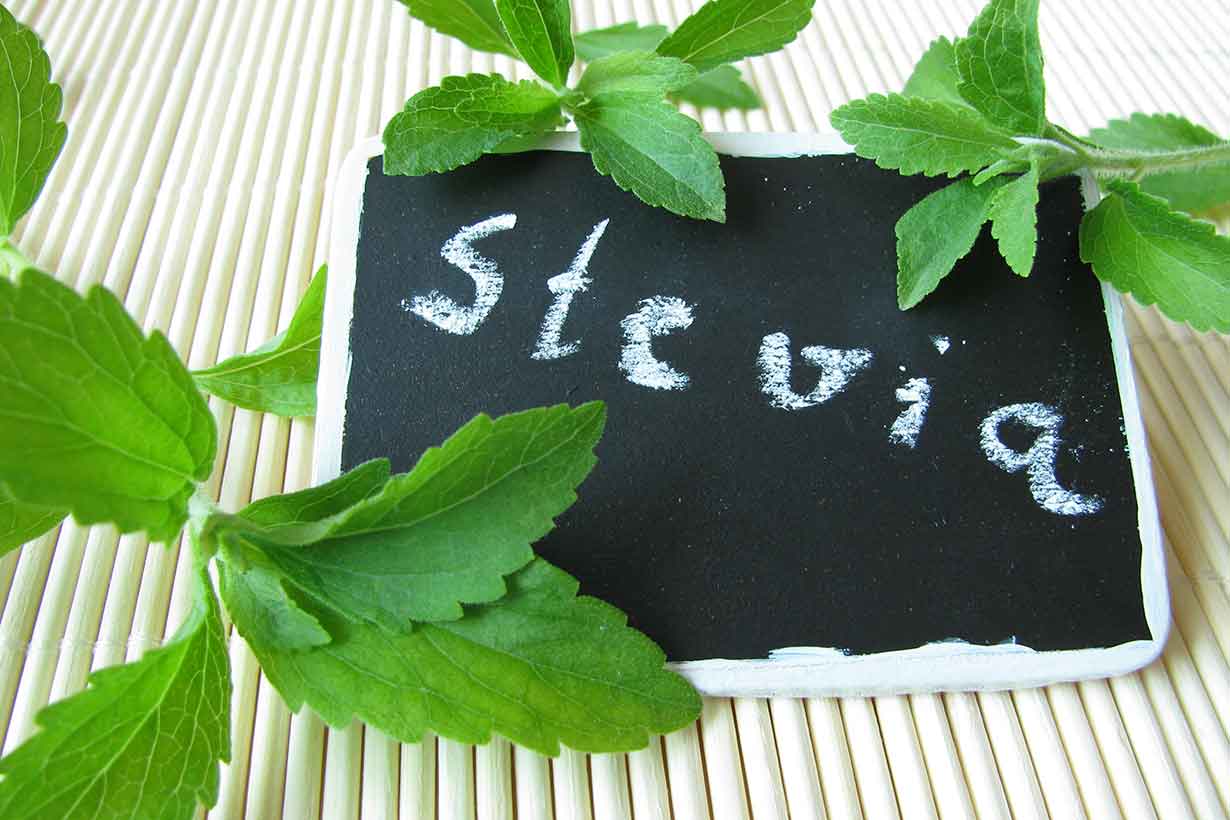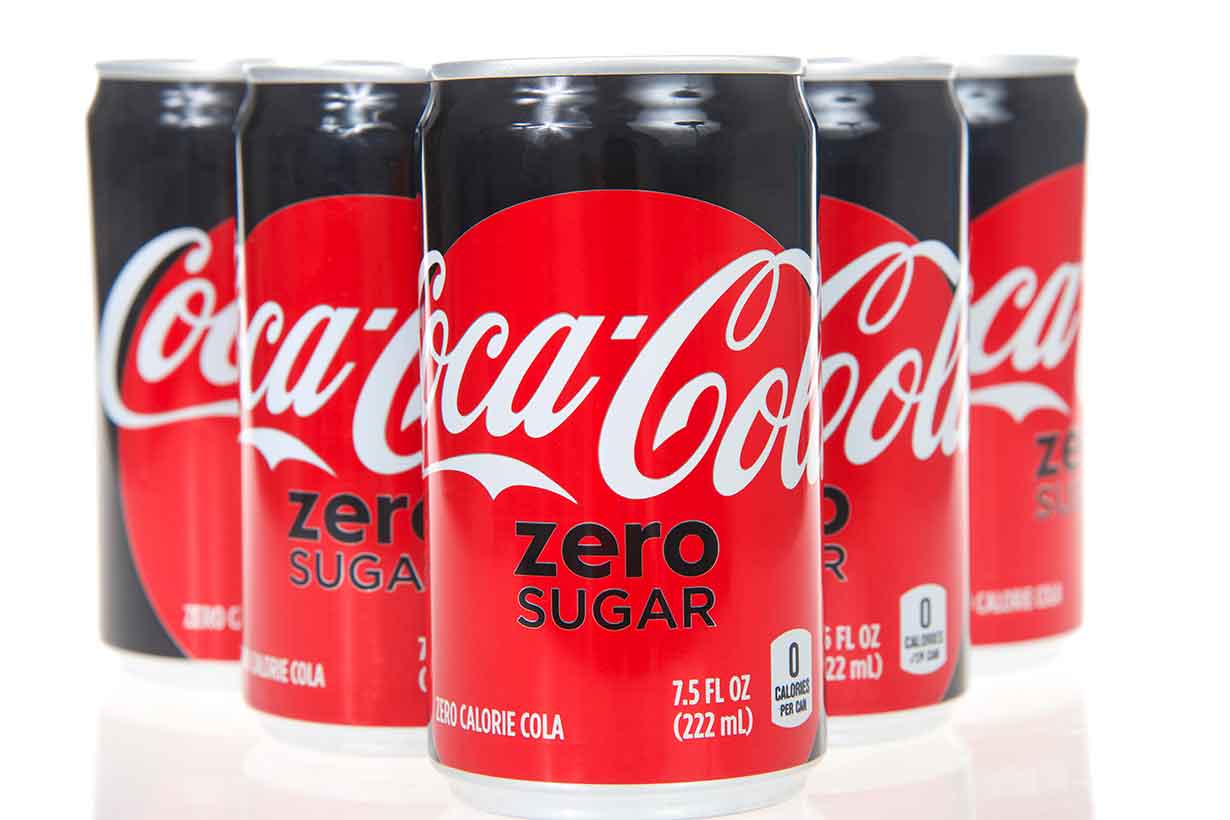Erythritol and xylitol are two popular sweeteners with characteristics similar to table sugar.
However, these sweeteners have a much lower calorie content than sugar and have little effect on blood sugar.
How do erythritol and xylitol compare, and which is the better sweetener?
This article examines the characteristics of these two sweeteners and the scientific research on them.
Table of contents
What Are Erythritol and Xylitol?
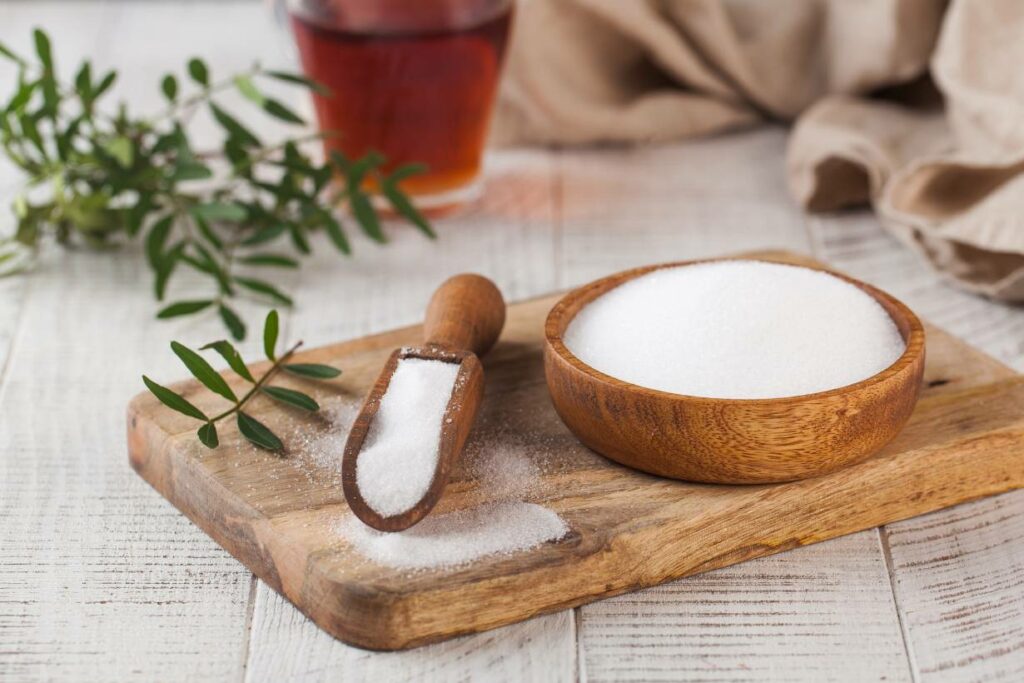
Erythritol and xylitol are both sweetening agents known as sugar alcohols. They are available as sweeteners and feature in various ‘sugar-free’ commercial products.
Firstly, erythritol is produced via the fermentation of glucose or fructose with yeast (1).
Learn more about erythritol here
In contrast, xylitol production comes from the fermentation of a type of hemicellulose found in plants called xylan (2).
Find out more about xylitol here
While we can produce concentrated versions of erythritol and xylitol, it is worth noting that they both occur naturally within food. For example, we can find xylitol in strawberries and plums, and erythritol is present in cheese, grapes, and melons (3, 4).
Erythritol and xylitol are particularly popular with followers of low-carbohydrate diets and individuals with type 2 diabetes. One reason for this is that both sweeteners have a low glycemic index and minimal impact on blood glucose levels (5, 6).
Erythritol vs. Xylitol: How Do They Compare?
The following table compares the primary characteristics of xylitol and erythritol.
References for calorie content (7), glycemic index (7, 8), sweetness level (9, 10), heat stability (11), dental health (12, 13, 14, 15), potential side effects (16, 17), and other considerations (18, 19) all come from peer-reviewed scientific studies.
| Characteristic | Erythritol | Xylitol |
|---|---|---|
| Calorie content (calories per gram) | 0.2 kcal | 2.4 kcal |
| Glycemic index | 0 | 7-13 |
| Sweetness level | Approximately 30% less sweet than sucrose | Similar sweetness to sucrose |
| Heat stability | Thermal stability shown at 180°C (356°F) and possibly above | Stable at temperatures up to its boiling point of 216°C (420°F) |
| Dental health | May help reduce dental plaque, doesn’t contribute to acid production | May help reduce dental plaque, doesn’t contribute to acid production |
| Potential side effects | Potential digestive issues (usually at higher intake levels): bloating, cramps, discomfort, gas | Potential digestive issues (usually at higher intake levels): bloating, cramps, discomfort, gas |
| Uses | Baking, sweetening drinks, a general replacement for sugar | Baking, sweetening drinks, a general replacement for sugar |
| Taste | Similar taste to sugar, but it isn’t quite as sweet. Erythritol has a cooling sensation in the mouth as it dissolves. No prolonged aftertaste. | Similar to sugar in terms of sweetness and flavor. The two are very similar, but xylitol has a slightly different taste. No prolonged aftertaste. |
| Other considerations | Erythritol is considered to be safe for dogs. | Xylitol is highly toxic to dogs. |
Scientific Research On Erythritol and Xylitol
Here is a summary of some of the key research findings on erythritol and xylitol.
Impact on Blood Sugar
- Studies show that erythritol has a glycemic index of zero, meaning it has no impact on blood sugar levels. In contrast, xylitol has a small effect on blood sugar levels, with existing research showing the sweetener has a glycemic index of somewhere between 7 and 13 (7, 8, 20).
If the lowest glycemic response is the goal, erythritol has a slight advantage over xylitol.
Impact on Dental Health
Numerous studies on erythritol and xylitol show that, unlike table sugar, these sweeteners may benefit dental health.
Recent systematic reviews and meta-analyses
- A 2022 meta-analysis examined the effectiveness of xylitol in caries prevention. The findings from the meta-analysis showed that xylitol-containing products had a significant preventive effect on caries development compared to non-xylitol products (21).
- A 2022 systematic review demonstrated that sugar-free chewing gums containing xylitol might help to reduce gum inflammation. However, the evidence was inconclusive, and further well-controlled studies are necessary. In addition, there was no equivalent research on erythritol to enable a comparison between the two (22).
- A 2020 systematic review assessed how erythritol and xylitol consumption impacted the levels of an oral bacteria called mutans streptococci. This bacteria can play a role in the development of dental caries. The review examined 21 randomized controlled trials on xylitol and one randomized controlled study on erythritol. Across the xylitol studies, higher intake levels lowered the levels of mutans streptococci. However, no consistent effects were seen in the one erythritol study, though more research is necessary (23).
Interesting single studies
- A 2022 randomized controlled trial showed that xylitol and erythritol-containing lollipops significantly increase salivary pH. Lower (acidic) pH levels increase the risk of dental caries (24).
- In a 2014 randomized controlled trial completed by 374 primary school children, participants were instructed to consume four candies containing a sweetener three times per day. The children were split into three groups; an erythritol group, a xylitol group, and a placebo (sorbitol) group. The study demonstrated that the erythritol group had significantly fewer dental caries after 24 months and 36 months of follow-up (25).
- In 2001, a 2-month study had 15 participants consume erythritol-containing saliva-stimulating pastilles, and 15 consume xylitol-based pastilles five times daily. After two months, plaque and salivary levels of streptococci bacteria were significantly lower in the group consuming xylitol. However, this effect wasn’t visible in the erythritol group (26).
As shown in this section, both erythritol and xylitol may have beneficial dental effects.
However, if dental caries prevention is the primary consideration, there is more research (and thus more evidence) in this area favoring xylitol.
Potential Side Effects
Erythritol and xylitol can both cause potential side effects, mainly in the form of digestive issues.
- In a randomized controlled trial, seventy healthy participants consumed either 20, 35, or 50 grams of erythritol or xylitol while maintaining their normal diet. No significant gastrointestinal symptoms were seen with 20 or 35 grams of erythritol, but 50 grams resulted in significantly increased reports of nausea. With xylitol, all intake levels resulted in increased reports of watery feces, but significantly more so at intakes of 35 or 50 grams (27).
- Numerous studies show that above a certain threshold of intake, both xylitol and erythritol can cause digestive issues, including but not limited to bloating, cramping, diarrhea, and nausea. This threshold dose appears to be around 0.7 to 0.8 grams per kilogram of body weight for significantly increased reports of erythritol side effects. With xylitol, research suggests the maximum dose which doesn’t cause increased reports of side effects is approximately 0.3 grams of xylitol per kilogram of body weight (27, 28, 29, 30).
In summary, both erythritol and xylitol are capable of causing symptoms of digestive discomfort. However, it appears that erythritol is better tolerated on a gram-for-gram basis.
Dogs
An important point when considering xylitol use is whether or not there is a dog present in the home.
Since some dogs are willing to eat anything, xylitol-containing products lying around could potentially cause harm since the sweetener is toxic to dogs.
But what do studies show about the effect of different doses of erythritol and xylitol on dogs?
Erythritol
- In a 2017 study involving Beagle dogs, no clear dose-related toxicity was visible for erythritol at doses of up to 5 grams per kilogram of body weight a day (31).
- An earlier 1996 study found that doses of up to 3.5 grams of erythritol per kilogram of body weight per day were well-tolerated by eight dogs over 53 weeks (32).
In other words, these studies suggest that a 15-kilogram dog accidentally consuming 50 grams of erythritol shouldn’t have any toxic effects.
Xylitol
In contrast, there is no ‘safe’ level of xylitol intake for dogs; the sweetener is highly toxic to them.
- Ingestion of xylitol can result in severe hypoglycemia (low blood sugar) followed by liver failure and clotting (33).
- Doses of xylitol as small as 0.1 grams per kilogram of body weight can cause dangerously low blood sugar in dogs. Additionally, doses above 0.5 grams per kilogram of body weight can cause liver failure (34).
Which Is the Better Sweetener?
To summarize the characteristics and scientific research behind these sweeteners, here are some reasons to choose one over the other.
Reasons To Choose Erythritol Over Xylitol
- Digestive-related side effects are less common at equivalent intake levels to xylitol.
- Unlike xylitol, erythritol isn’t toxic to dogs.
- Both sweeteners have little impact on blood sugar levels, but erythritol has a lower glycemic index (thus a slightly lesser impact) than xylitol.
Reasons To Choose Xylitol Over Erythritol
- Xylitol has taste characteristics closer to table sugar than erythritol. In this regard, it has the equivalent sweetness and can be used as a replacement on a gram-for-gram basis.
- The breadth and strength of evidence for xylitol’s dental benefits are more significant than that of erythritol.
- Some people dislike erythritol’s cooling sensation as it dissolves in the mouth; xylitol does not have this effect.
Overall, there is little to separate between the two, and personal preference and individual considerations are key.
For example, those with a dog may want to use erythritol rather than xylitol just for safety if the worst happens and the dog accidentally eats some sweetener-containing food.
Likewise, others may prefer to use xylitol for the more substantial evidence of benefits for oral health it has behind it.
Additionally, it is worth remembering that a wide range of commercial sweeteners is available.
Although not as useful for recipes, sweeteners like aspartame are an option for sweetening drinks.
Where To Buy Erythritol and Xylitol
Both these sweeteners are available for sale in most large grocery and health food stores.
A wide range of xylitol and erythritol products is available online (disclosure: affiliate link).
Additional Information
Here is some additional information that answers common questions on erythritol and xylitol.
The two sweeteners have similar taste characteristics, but erythritol isn’t as sweet as xylitol. Therefore, using erythritol in recipes calling for xylitol is possible, but a slightly higher quantity is necessary for providing equivalent sweetness.
Erythritol is approximately 30% less sweet than xylitol, so an extra 30% dose would provide equivalent sweetness. For example, 65 grams of erythritol would offer a similar sweetness to 50 grams of xylitol.
The taste won’t be 100% the same, but erythritol and xylitol can replace sugar in recipes calling for it. Equal amounts of xylitol work (a 1:1 ratio with table sugar). As erythritol is 30% less sweet than table sugar, about 1.3 parts erythritol equals 1.0 part sugar. So, for instance, a tablespoon and a quarter of erythritol will provide similar sweetness to one tablespoon of sugar.

